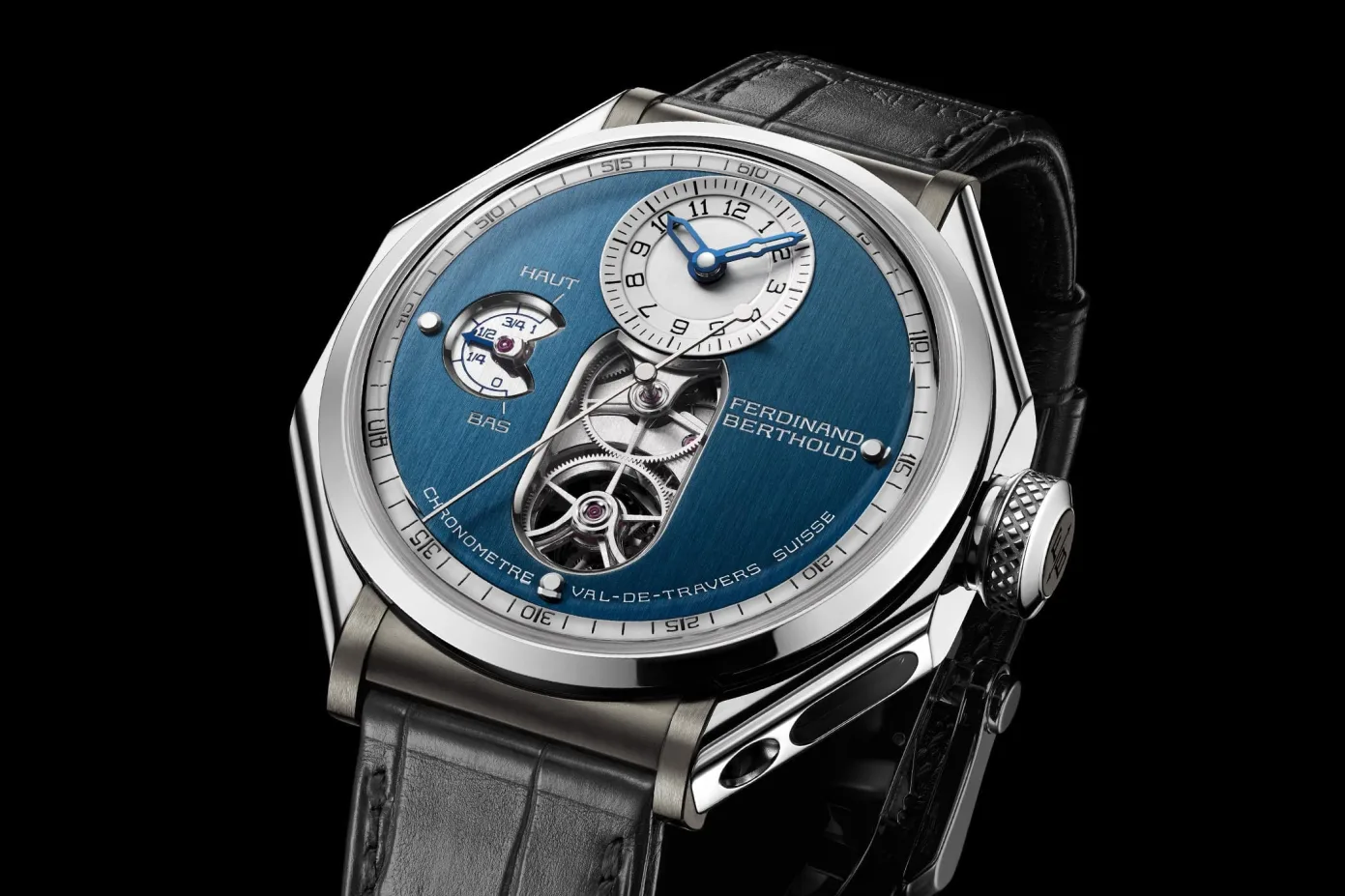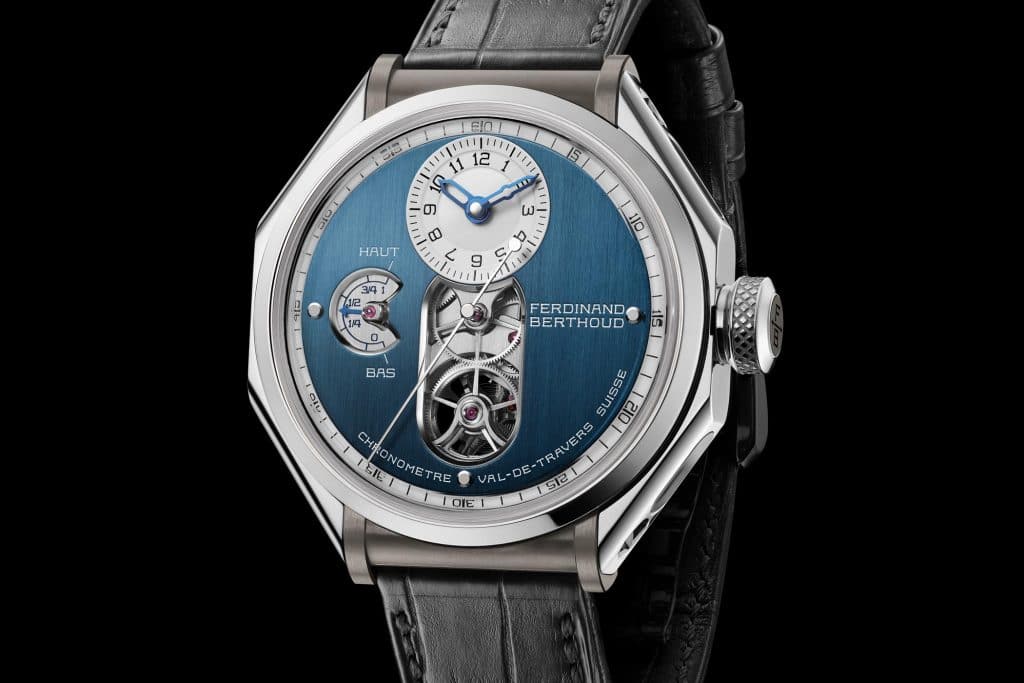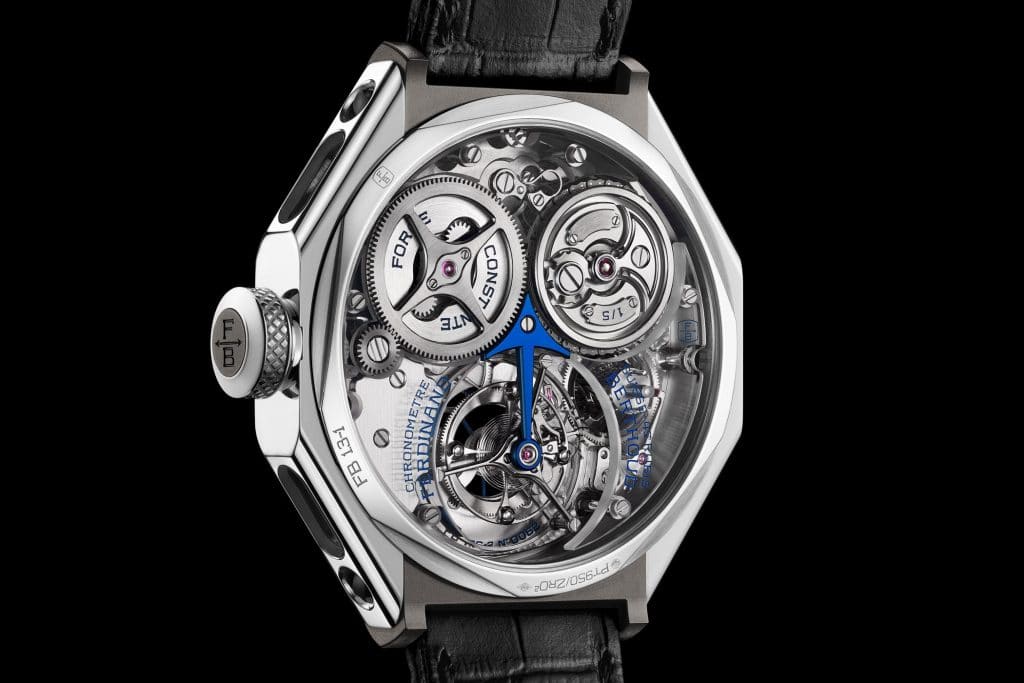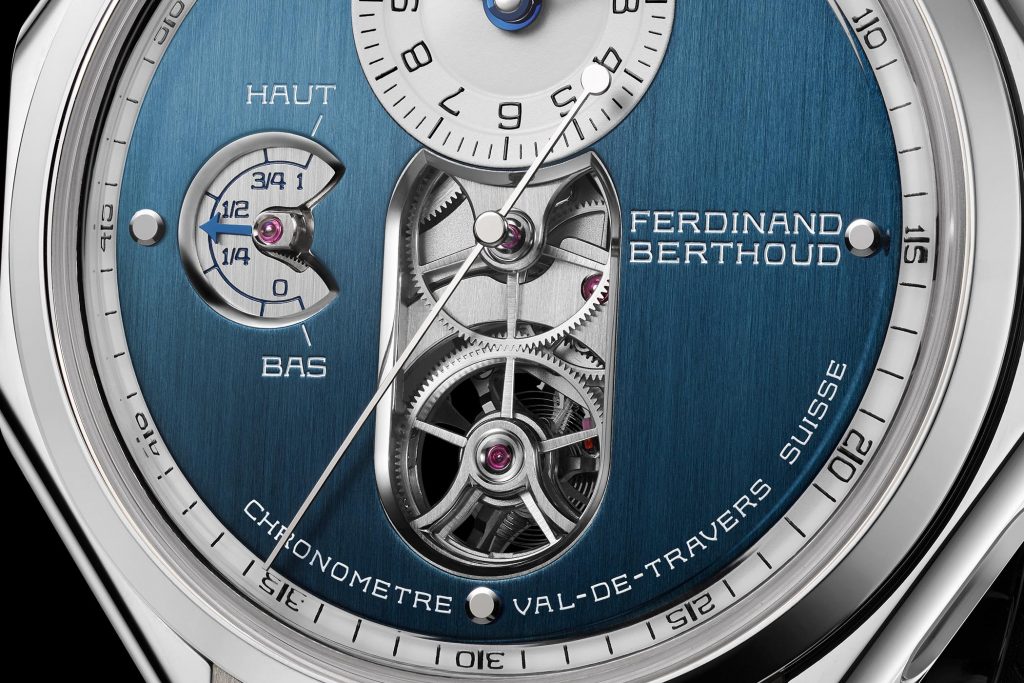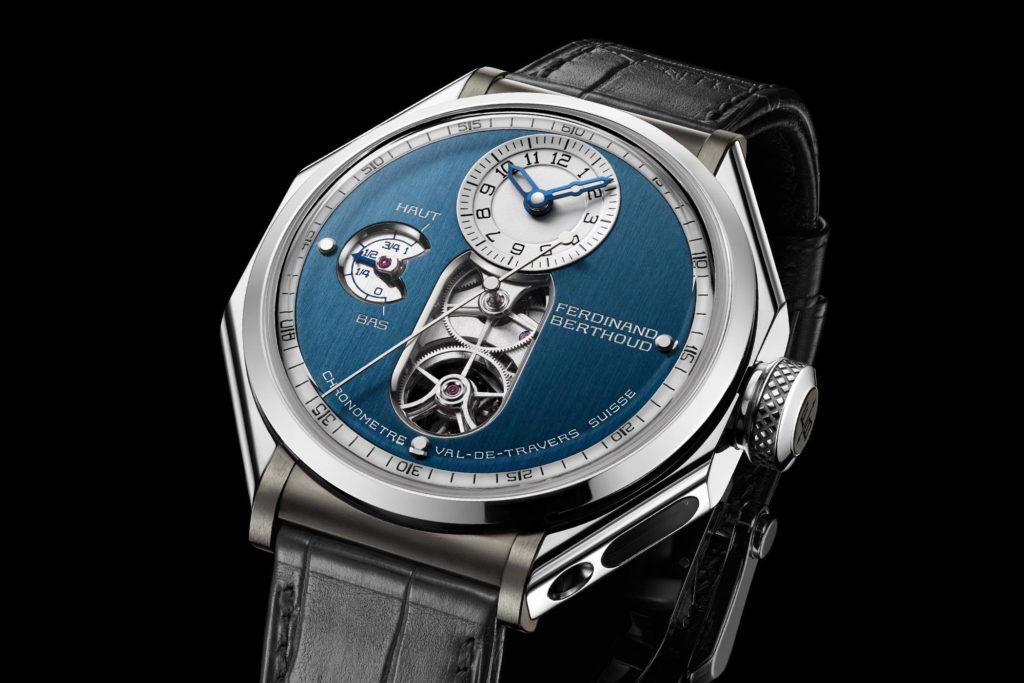Ferdinand Berthoud is one of our most favourite watchmakers thanks to their seriously good looking watches, highly decorated movements and their attention to detail. They’re also not afraid to be very much the left-field choice when it comes to haute horlogerie, which both works in their favour with enthusiasts but counts against them in terms of sales. I’ve spoken to a couple of dealers who used to sell them, and they both mentioned how hard they were to shift.
This new one should help to get the cash flowing thanks to its blue dial, which is all the rage right now. The vertically brushed dial is a mixture of contemporary design with some olde-worlde charm for good measure. The power reserve indicator uses the words haut, meaning top and bas meaning base. Gears connected to the tourbillon cage and the long, thin seconds hand are visible on the dial thanks to a cutout at the centre. The time display itself takes up a small portion of the dial at the 12 o’clock position, with blued sword style hands indicating the passing of the hours and minutes.
Turn the watch over, and you’ll find the calibre FB-T.FC-2 is visible through a sapphire caseback. Last year I had a Ferdinand Berthoud watch on test, and while the layout of the movement was identical to this, it didn’t have the unique feature of the FB-T.FC-2, that unique feature is the use of sapphire. The three bridges of the movement are not elegantly guilloché’d, but are much more high-tech. Making a piece of sapphire crystal with multiple fascets cut out of it for the various components is a real feat, and it demonstrates Ferdinand Berthoud’s commitment to exceptional craftsmanship (that sounded a little like the spiel in a press release, I promise I wrote it myself).
The tourbillon takes centre stage with a large blue arrow-shaped cock supporting it. The process for making this arrow blue is called Chemical Vapour Deposition or CVD for short. The component is put into a chamber which heats to over a thousand degrees Centigrade, at these temperatures the component’s surface reacts with gases in the chamber to produce a uniform finish that can be microns thick. This process is superior for watchmakers as it allows the component to be decorated both before and after the CVD process with good results. Ferdinand Berthoud is renowned for its use of metals that are unconventional in watchmaking today, and their steel cases receive a secretive treatment to increase the hardness of steel massively.
The tourbillon runs at 3Hz and has one of the largest diameters in the tourbillon world (assuming the diameter doesn’t change across any of the movements, it is 16.55mm in diameter). It gets its power by a fusée & chain, which helps to regulate delivery of the power to the tourbillon. You can see parts of the fusée and chain through porthole-like cutouts on the sides of the octagonal case. Also visible is the unique method of reading the power reserve. A truncated cone moves up and down a spindle, depending on how much power is left. A jewel-tipped feeler arm rests against it, and through a ‘complicated set of equations’, is displayed via a hand on the dial. It’s lovely to be able to see all of this more clearly inside the case, thanks to the sapphire bridges. It’s also a chronometer-certified movement, too.
Visit Ferdinand Berthoud here.

